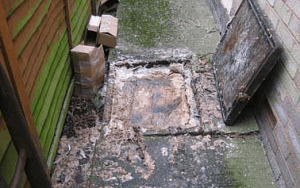Waste is the strategy for eliminating surface or sub-surface water from a given territory. Seepage frameworks incorporate the entirety of the funneling inside a private or public property that passes on sewage, water, and other fluid waste to a state of removal. The primary target of a seepage framework is to gather and eliminate squander matter efficiently to keep up solid conditions in a structure. Seepage frameworks are intended to discard wastewater as fast as could reasonably be expected and ought to keep gases from sewers and septic tanks from entering neighborhoods. So keep a safe cleaning service over the drain system keeps on agreed with the experienced organizations like Blocked Drains Ashford which would have expert working persons with repairing the problematic sense. In the service of drain clearing, one might have the best service with affordable pricing and work done with perfection.
Resident drainage system:

Residential drainage systems help to remove excess water from residential areas. This system helps whisk water away from walkways, driveways, and roofs to avoid flooding. Residential drainage systems are very important as they prevent rotting, mold, mildew, and structural damage in buildings from a buildup of water.
The types of residential drainage systems are:
- Surface
- Subsurface
- Slope
- Downspout/gutters
Surface Drainage Systems:
Surface drainage systems contain shallow ditches dug in a parallel pattern, which acts as canals for run-off water. These ditches lead the water into the main drain to avoid water pooling and flooding in the living place.
Subsurface Drainage Systems:
A subsurface drainage system is also known as a French drain. Subsurface drains are placed beneath the top layer of soil to remove excess water at the root level. Subsurface drains require the digging of deep ditches and the installation of underground pipes. There in the subsurface drainage system huge collector drain is installed to collect water from the pipes.
Slope Drainage Systems:
In the process of Slope drains the water could be allowed to flow downward from a structure with the aid of pipes moving down a slope. A pipe is installed and anchored into a small incline, which causes water to flow through the pipe and away from the structure. These structure drainage systems would be much easier and help to avoid unwanted issues over the drain water that is removed from the living area.
Downspout and Gutter systems:
Downspouts collect water from gutters and divert it to the ground. A downspout is typically connected to a gutter system on a building and carries water away from the roof down to the ground. Downspouts empty the water on a slope so that the water does not pool at the base of the downspout.
Combined drains in the house:
Combined drainage systems use a single drain to convey both glasses of water from sanitary usage and rainwater from roofs and other surfaces to a shared sewer. This system is economical to install. Separate drainage systems use separate foul water drains that lead to a sanitary sewer. The rainwater from roofs and other surfaces is conveyed in a separate surface water drain into a surface water sewer. This system is relatively expensive to install. Through this classification, one can easily make out with the service in which they can afford and which will be suitable with the structure of one’s house from the unwanted and wastewater.

